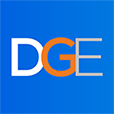When it comes to marketing communications, digital is simply another channel, a supplemental, complementary force, perhaps an evolution but certainly not a replacement. Companies who grasp this are able to deftly steer prospects through a sales funnel that persuades on two levels, with messages that “run on two legs” rather than hop along on one.”
The misperception persists that digital communication is simply ‘traditional comms in new shoes.’ Five years ago, there was a fear that the world of business had somehow grown out of print, and would have to slip solely into digital in order to run its company marketing adequately. Not so, especially if it wants strong results. Sure, people spend more time online. And yes, connected devices number in their billions. But you can’t turn a brochure off, nor power-down a print ad.
Despite what the best-meaning digital start-up would have us believe, not everyone needs to Snap and Insta to reach their customer base. Thankfully, it’s not a choice between ‘dead tree media’ and ‘new age wizardry’ when a lot of the time, it’s ‘option C, all the above.’ So, how to make sure messages are integrated, channels are balanced, and the brand is consistent across its external surfaces? Well, asking for help is a sure start, but this step can often take businesses in the wrong direction when the help they opt for is a hastily-appointed internal Content Manager.
Message integration
Is there really a hard divide between the new agency that’s niched into pure digital, and what the world insists on calling the ‘traditional’ agency, where multi-channel messaging (print, online, outdoor, SoMed, event and so on) is akin to a science, learned through crafted experience? Only if you want to limit the reach of your brand. DGE customers, for instance, understand that it’s never black & white, and that finding and reaching an audience is only the start; touching and keeping them is next, which is where multi-channel marketing comes into its own. With integrated messaging—consistently applied and competently followed through—both the ‘traditional’ forms and the digital perform as they should, reinforcing each other, supporting not competing.
The Emperor’s New Data
“There are lies, damned lies and statistics,” Mark Twain wrote more than 100 years before likes and views and page impressions and eyes-on-screen became the damning metrics of the marketing world. The explosion in data that began when the first pages were ranked (and the race was on to rise in the listings), has brought about entire new careers for number-crunchers and reassurers, dedicated to precision-listing and pivot tabling the minutiae of every aspect of every action that can be digitised and analysed. That’s not to say we shouldn’t keep a close eye on business of course; but experience tells us when it’s time to step back and look at the bigger picture, not get lost in the detail just because it’s there. At the end of the day, the most important number is the bottom line; we’ve all seen what can happen when businesses get distracted by the latest data-combine-harvester or fancy shiny business tool: nice charts about bad crops. We believe it’s time to get back to the message, get the message out to the world, sticking to the OneVoice approach and knowing what to measure when it’s out there.
what’s the point of this message? Isn’t it all about trying to get somewhere, get results?
Is there really a hard divide between the new agency that’s niched into pure digital, and what the world insists on calling the ‘traditional’ agency, where multi-channel messaging (print, online, outdoor, SoMed, event and so on) is akin to a science, learned through crafted experience?
“There are lies, damned lies and statistics,”
Mark Twain
Reality check
What kind of brand are you? What’s your personality? Are you a sassy kid with smart answers to a mildly amused SoMe audience looking for meme-worthy laughs? Are you hankering after the reputation of some of the big consumer brands who know how to act in a crisis and get the youth market on board with some savvy sponsorship? Or do you just think that might be a change from the reality of being a steady, responsible—maybe even essential—supplier of goods and services to other companies on an international scale? Maybe you don’t want to hire a young Social Media manager with an attitude to give (mostly) great and (sometimes) on-brand responses to a needling audience out to stir up some controversy for their followers. Maybe you don’t need to, but sometimes the tide sweeps us along and we end up following the flow because we don’t want to miss out. In either case, a reality check is often a good idea, an audit of what your tools are bringing you (versus what they promised). Then, once you’ve shaken off what you don’t need, you can find out what lean performance can really be.
Or, you can hop along and hope that digital will get you the results you need to fill a cloud of charts that don’t touch the bottom line.
Running on two legs?
So, what’s the catch, what’s the sell, what’s the point of this message? Isn’t it all about trying to get somewhere, get results? Sure it is, in the best way possible, with both pillars of your growing and moving business working in harmony, not tripping each other up, then kicking each other and knocking you down in the process. It’s about running a business with the right marketing channels, both ‘traditional’ and new media working supportively together in harmony.



